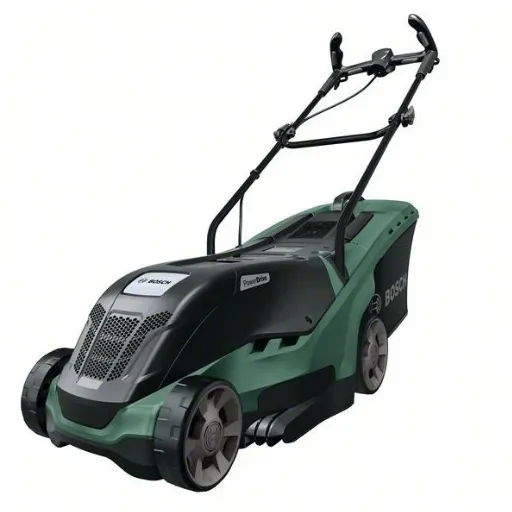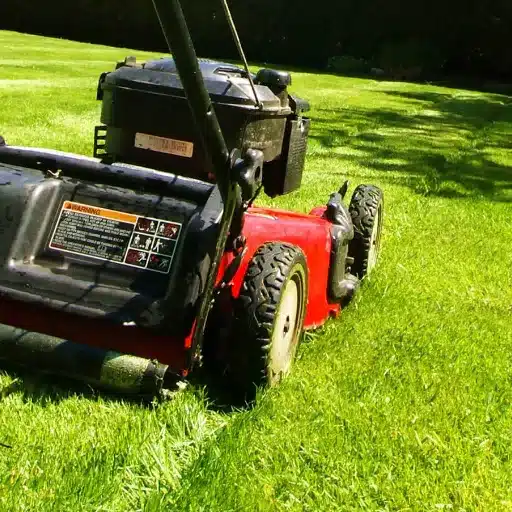The journey of crafting spaghetti from raw ingredients to the delightfully firm, perfectly cooked strands on your dinner plate is a meticulous and fascinating process. This blog post will explore each step of the spaghetti production line, providing insights into the art and science that come together to produce this beloved staple. We begin by examining the selection of high-quality durum wheat and the importance of proper milling techniques to achieve the perfect semolina flour. Following this, we delve into the intricate processes of mixing, kneading, and extruding the dough, each stage essential for developing the spaghetti’s characteristic texture and elasticity. Finally, we cover the drying and packaging processes, ensuring that the spaghetti maintains its quality and freshness until it reaches your kitchen. Through this exploration, readers will gain a comprehensive understanding of how raw materials are transformed into the perfect pasta, ready to inspire culinary delights.
How Does a Spaghetti Production Line Work?

The spaghetti production line operates as a highly coordinated system, geared towards converting raw ingredients into finished pasta with precision and efficiency. The process initiates with the selection of premium durum wheat, which is milled into semolina flour. This flour is then mixed with water to create dough, which is kneaded to achieve the ideal consistency. The dough is then extruded through specially designed dies that shape it into long strands of spaghetti. These strands undergo drying in controlled environments to remove moisture and stabilize the pasta. Finally, the dried spaghetti is cut to size and packaged, ready for distribution. Each step is crucial to ensuring the spaghetti maintains its quality and structural integrity, resulting in a product that is consistently delicious and dependable for consumers.
What is the Role of Machinery in a Spaghetti Production Line?
Spaghetti production line will always require some machinery because they are important for improving efficiency, accuracy, and uniformity. First, by dint of milling machines, durum wheat is turned into semolina of the best quality. Then, the semolina is blended with water in automated mixers and kneaders to achieve the desired consistency. Dough is turned into spaghetti noodles in extrusion machines equipped with appropriate dies. High-performance dryers dry pasta in a controlled environment while maintaining its quality. Eventually, packaging machines dispense spaghetti rapidly while packing it at a predetermined length. The product of several machines is always Spaghetti of good quality. This simplifies the entire production process. Manual labor is minimal.
Understanding the Production Process for Spaghetti Pasta
From the selection of high-quality durum wheat for milling into semolina flour, let us cover how spaghetti is produced. Once again, mixers mix this flour with water in order to make dough which is essential for achieving the correct consistency. Later, the dough is formed into spaghetti with extrusion machines, using special dies to give the proper shape to every strand. Moisture is removed, but care is taken not to wreck texture by using sophisticated dryer heat and humidity control. Then the very last step: the spaghetti is cut and packed automatically to make sure that the product is still the same. There are several stages that could also be considered these steps are largely mechanized, thereby shortening time, reducing errors and increasing output while ensuring the quality and integrity of products throughout the entire spaghetti-making process.
How is Quality Control Maintained in Spaghetti Production?
Quality control in spaghetti production involves several key steps. First, producers test durum wheat for protein content and gluten strength before milling. During mixing, they continuously monitor dough consistency to prevent variations. Advanced sensors track the extrusion process to ensure uniform strand thickness. Precision-controlled dryers regulate temperature and humidity to preserve texture. Automated packaging systems also inspect for weight accuracy and piece integrity. Quality checkpoints throughout the production line enable quick identification and resolution of any issues, ensuring that the finished product consistently meets high standards for taste and texture.
What Are the Key Components of a Pasta Production Line?

The key components of a pasta production line include:
- Milling Unit: Grinds durum wheat into semolina.
- Mixing Machine: Blends semolina with water to form dough.
- Extrusion Machine: Shapes dough into pasta strands.
- Drying System: Uses precise temperature and humidity controls to dry pasta.
- Cutting Station: Cuts pasta to desired lengths.
- Packaging Unit: Packs and inspects the pasta for consistency and integrity.
Each component plays a vital role in ensuring efficiency and maintaining quality throughout the production process.
The Importance of the Extruder Machine in Pasta Making
The extruder machine plays a crucial role in pasta production by transforming dough into a wide variety of pasta shapes. As dough passes through dies, the extruder precisely shapes it, ensuring uniformity in size and form, be it spaghetti, penne, or macaroni. This consistency is vital for ensuring even cooking and enhancing the overall quality of the product. Moreover, the extruder can adjust to create customized shapes and sizes, offering versatility in pasta manufacturing. Its ability to operate continuously ensures high efficiency and productivity, making it an indispensable component of modern pasta production lines.
What is the Function of a Spaghetti Machine?
The main function of a spaghetti machine is to convert long pieces of pasta dough into strands of spaghetti. The machine in question employs the extrusion technique in which dough is pushed through a die made particularly for spaghetti. This machine improves uniformity and thickness, qualities that are necessary for even cooking. The equipment allows for uninterrupted and continuous production, increasing volume whilst not sacrificing quality. It can also be utilized in spaghetti manufacturing and resizing, enhancing its potential for production.
How Does a Packing Machine Work in the Production Line?
A packing machine in a production line systematically fills and seals packaging containers like bags or boxes with products. First, the machine precisely measures the product to ensure each package has the correct amount. Next, it fills the measured product into the packaging container. After filling, the machine seals the package to preserve the product’s quality and safety. Sensors in the machine detect errors, ensuring consistent packaging. Its automated process enhances speed and accuracy while reducing labor costs, making it an essential component of efficient production lines.
How to Optimize Your Spaghetti Production Line for Efficiency?

To optimize your spaghetti production line, focus on streamlining each process for maximum output and minimal waste. Begin by ensuring all machines are well-maintained and calibrated. Regularly update the software to improve performance and detect any inefficiencies. Use sensors to monitor production in real-time, allowing for immediate adjustments. Simplify the workflow by reducing unnecessary steps and automating repetitive tasks. Train employees continuously to ensure they can handle equipment troubleshoots effectively. Finally, conduct regular audits to identify areas of improvement and implement best practices across the board.
Strategies for Increasing Production Capacity
To increase production capacity, start by streamlining operations to remove inefficiencies. Optimize workflow by rearranging the production floor for better material flow and reducing unnecessary steps in assembly lines. Upgrade machinery to faster, more efficient models to boost output while ensuring equipment is regularly serviced to prevent downtime. Implement lean manufacturing techniques to eliminate waste and improve process efficiency.
Moreover, enhance workforce productivity through targeted training and by fostering a culture of continuous improvement. Encourage cross-training to increase workforce flexibility and mitigate the impact of staff shortages. Introduce performance incentives to motivate employees towards meeting higher production targets.
Finally, leverage technology like advanced software for predictive maintenance and production monitoring. These tools identify potential issues before they occur, ensuring smooth operations and higher capacity. Additionally, automate repetitive tasks to save time and reduce human error, thereby accelerating production rates.
The Role of Automation in Modern Pasta Lines
Automation plays a crucial role in modern pasta production, significantly enhancing efficiency and consistency. With automated systems, pasta lines can operate with precision, reducing human error and enabling continuous operation. Automation streamlines processes such as mixing, cutting, and drying, optimizing production speed and consistency. It also ensures uniform product quality by standardizing each production phase, minimizing variability. Automated systems enhance flexibility by rapidly adapting to different pasta shapes and sizes without extensive reconfiguration. These innovations reduce labor costs while maintaining high throughput and allowing for real-time monitoring, which enables swift adjustments and predictive maintenance. Embracing automation transforms pasta production, delivering efficiency and maintaining impeccable quality standards.
Choosing the Right Spaghetti Making Machine for Your Needs

When choosing the right spaghetti making machine, first assess your production volume requirements. Small businesses might benefit from compact, easy-to-use machines, while larger operations need industrial-grade equipment for high output. Next, consider the machine’s versatility. Opt for a model that can adjust to various spaghetti sizes without lengthy reconfigurations. Additionally, evaluate the machine’s efficiency and energy consumption, aiming for eco-friendly options that reduce operational costs. Prioritize machines with intuitive controls for ease of use and maintenance. Lastly, examine support and warranty offerings to ensure long-term service and reliability. By focusing on these key aspects, you can select a machine that optimally meets your production needs.
Factors to Consider When Selecting a Pasta Machine
When selecting a pasta machine, begin by identifying the production capacity that matches your business needs, whether for small-scale or mass production. Consider the level of automation needed—fully automated machines increase efficiency and consistency, while semi-automated ones offer more control. Ensure the machine can handle various pasta shapes and sizes to expand your product line. Check for user-friendly controls and low-maintenance components to save time and reduce downtime. Prioritize energy efficiency and compliance with industry standards. Finally, choose manufacturers with strong after-sales service and warranties to ensure longevity and support.
What are the Benefits of Using Automatic Spaghetti Machines?
Automatic spaghetti machines offer numerous benefits that enhance productivity and efficiency in pasta production. Firstly, they streamline the process, saving time and reducing labor costs by automating mixing, kneading, and extrusion. Consistency in pasta quality improves since these machines precisely control ingredient ratios and extrusion speeds, ensuring uniformity in every batch. Furthermore, automatic machines increase output, crucial for meeting high demand without compromising on pasta quality. Their user-friendly interfaces simplify operation, reducing the need for extensive training. Lastly, many models offer versatile settings, allowing easy adaptation to produce various pasta shapes and sizes, thereby expanding product offerings effectively.
Understanding the Spaghetti Production Process from Start to Finish

To understand the spaghetti production process, start with the preparation of ingredients. Combine flour and water, ensuring the correct ratio for optimal dough consistency. Next, proceed to kneading, where you mix the ingredients until the dough is smooth. Use an automatic spaghetti machine to extrude the dough into strands, maintaining uniform thickness and length. During extrusion, monitor the machine’s settings to adjust for different pasta shapes, if needed. Once extruded, dry the spaghetti thoroughly to prevent spoilage and maintain quality. Finally, package the noodles securely, ensuring they are ready for shipment and consumption.
What is the Significance of Semolina in Spaghetti Production?
Semolina contributes significantly to the production of spaghetti because of its coarse nature and high gluten content and hard wheat endosperm that gives dough strength and elasticity, qualities that are important. This wheat product keeps the shape of the spaghetti and does not allow noodles to overcook and become too soft. Its relatively high protein content shall give the final pasta a chewy bite and a wholesome finished product. Besides, semolina also gives spaghetti its natural golden color, which is further enhanced by the unique properties of the flour. All in all, semolina forms an essential part of the production of Italian spaghetti with unique and exquisite tastes and textures.
How Does the Extrusion Process Shape Spaghetti?
The production of spaghetti varie the dough by pressing it through a die with holes of specific size or shape which cuts the paste into strands of definite cross-sections. The characteristics of the paste and the shape of openingof the die guarantee such a requirement as a uniform cross-sectional shape of every strand practically with no deviations. It can be done by regulating the speed and the pressure during extrusion. The peculiarities of the forming die will regulate the diameter of the strands and texture. Not only does this affect the look of the spaghetti, but it also affects the texture and how well the spaghetti suchs sauce.
Ensuring Food Safety in Spaghetti Manufacturing
Ensuring food safety in spaghetti manufacturing involves several critical steps. First, I implement rigorous quality control measures to ensure all raw materials, including semolina, meet safety standards. Throughout production, I employ modern sanitation practices to prevent contamination, regularly sanitizing equipment and work surfaces. Monitoring humidity and temperature levels during storage and drying phases is essential to inhibit bacterial growth. I adhere to strict cleaning schedules and conduct regular inspections to ensure compliance with food safety regulations. By training all staff in hygiene and safety protocols, I maintain a safe production environment, ensuring consumers receive high-quality and safe spaghetti.
References
-
The Ultimate Guide to Spaghetti Manufacturing Process – Loyal – This guide covers the spaghetti manufacturing process, starting with the selection of high-quality durum wheat.
-
Spaghetti Production Line – Parmatline – Details on automatic and semi-automatic long-cut pasta production lines.
-
Dry Pasta Production in the US – Market Research Report – Offers market research insights into the dry pasta production industry in the US.
Frequently Asked Questions (FAQ)
Q: What raw materials are essential for industrial pasta production?
A: The primary raw material for industrial pasta production is durum wheat, which is known for its high protein content and gluten strength. This results in a high quality product that holds its shape well when cooked.
Q: How does an industrial pasta production line operate?
A: An industrial pasta production line involves several stages, including mixing, kneading, extruding, cutting, drying, and packaging. The entire production line is designed to ensure efficiency and consistency in producing various pasta products.
Q: What are the benefits of using an industrial microwave in pasta production?
A: Using an industrial microwave in pasta production can significantly reduce drying times, improve energy consumption efficiency, and enhance the quality of the final product by ensuring even moisture distribution.
Q: What types of pasta can be produced on a cut pasta production line?
A: A cut pasta production line can produce a variety of pasta shapes, including macaroni, penne, rigatoni, and other short pastas. These lines are designed for flexibility and can easily switch between different pasta types.
Q: How does machine production help meet the growing demand for pasta products?
A: Machine production increases the production capacity and consistency of pasta products, helping manufacturers meet the growing demand for pasta products globally. Automation also ensures faster turnaround and reduces labor costs.
Q: What is the shelf life of dry pasta produced on an industrial scale?
A: Dry pasta produced on an industrial scale typically has a long shelf life, ranging from one to two years, if stored in a cool, dry place. Proper packaging also helps maintain its quality over time.
Q: How can I ensure low energy consumption in my pasta production line?
A: To ensure low energy consumption, consider using energy-efficient equipment, optimizing the production process, and incorporating technologies like industrial microwaves that reduce drying times and energy use.
Q: What are the differences between long cut pasta and short cut pasta in production?
A: Long cut pasta, such as spaghetti and fettuccine, is typically extruded and cut at a greater length, requiring careful handling during drying and packaging. Short cut pasta, like penne and macaroni, is cut into shorter pieces, which is generally easier to manage in bulk production.
Q: How can I get in touch for more information on pasta production solutions?
A: For more information on pasta production solutions, feel free to contact us through our website or reach out directly to our sales team. We offer customized solutions and equipment for various production needs.









